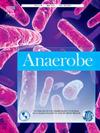Clostridioides difficile in raw mechanically separated poultry meat and pasteurized product made from contaminated meat
IF 2.6
3区 生物学
Q3 MICROBIOLOGY
引用次数: 0
Abstract
Objectives
Clostridioides difficile (C. difficile) is an important foodborne pathogen found in a wide range of products. This study investigated the occurrence of C. difficile in mechanically separated chicken and turkey meat (MSM) and in pasteurized products made from contaminated MSM.
Methods
The presence of C. difficile was analysed in 56 MSM samples (32 from turkey and 24 from chicken) and in six pasteurized meat products made from raw meats previously identified as C. difficile-positive. After enrichment, detection was performed by real-time PCR, and culture on selective media for C. difficile. The isolated strains were then characterized by PCR-ribotyping, toxinotyping, and whole-genome sequencing (WGS).
Results
C. difficile was detected in 16.1 % of MSM samples via real-time PCR, with a 10.7 % isolation rate. One pasteurized product also tested positive. The six isolates obtained displayed diverse PCR-ribotypes, five of which were toxigenic. Notably, the PCR-ribotypes and sequence types in the pasteurized product differed from those identified in the raw meat used for its production.
Conclusions
The presence of C. difficile in raw and subsequently pasteurized meat product indicates that the pathogen can survive the pasteurization process and may be present in such products.
机械分离的生禽肉和由受污染肉类制成的巴氏杀菌产品中的艰难梭菌。
目的:艰难梭菌(C. difficile)是一种重要的食源性病原体,广泛存在于各种产品中。本研究调查了艰难梭菌在机械分离的鸡肉和火鸡肉(MSM)以及由受污染的MSM制成的巴氏灭菌产品中的发生情况。方法:对56份MSM样本(32份来自火鸡,24份来自鸡肉)和6份先前鉴定为艰难梭菌阳性的生肉制成的巴氏消毒肉制品进行了艰难梭菌检测。富集后进行实时PCR检测,细菌培养分离。然后对分离的菌株进行pcr -核糖分型、毒素分型和全基因组测序(WGS)。结果:real-time PCR在MSM样品中检出难辨梭菌16.1%,分离率10.7%。一种巴氏杀菌产品的检测结果也呈阳性。获得的6株分离株显示出不同的pcr -核糖型,其中5株是产毒的。值得注意的是,巴氏灭菌产品中的pcr核糖型和序列类型与用于生产其产品的生肉中鉴定的不同。结论:在生肉制品和随后的巴氏灭菌肉制品中存在艰难梭菌,表明该病原体可以在巴氏灭菌过程中存活,并且可能存在于此类产品中。
本文章由计算机程序翻译,如有差异,请以英文原文为准。
求助全文
约1分钟内获得全文
求助全文
来源期刊

Anaerobe
生物-微生物学
CiteScore
5.20
自引率
8.70%
发文量
137
审稿时长
76 days
期刊介绍:
Anaerobe is essential reading for those who wish to remain at the forefront of discoveries relating to life processes of strictly anaerobes. The journal is multi-disciplinary, and provides a unique forum for those investigating anaerobic organisms that cause infections in humans and animals, as well as anaerobes that play roles in microbiomes or environmental processes.
Anaerobe publishes reviews, mini reviews, original research articles, notes and case reports. Relevant topics fall into the broad categories of anaerobes in human and animal diseases, anaerobes in the microbiome, anaerobes in the environment, diagnosis of anaerobes in clinical microbiology laboratories, molecular biology, genetics, pathogenesis, toxins and antibiotic susceptibility of anaerobic bacteria.
 求助内容:
求助内容: 应助结果提醒方式:
应助结果提醒方式:


